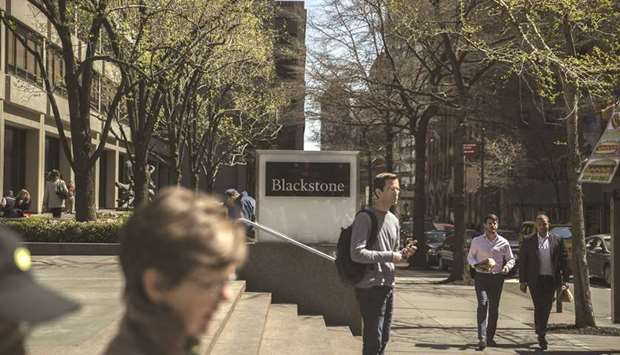The waterfront icon, with its soaring clock tower modelled on the 12th-century Giralda bell tower in Seville, will go on the sales block in coming weeks, a decade after Blackstone’s $39bn purchase of Equity Office Properties Trust, said Christine Anderson, a spokeswoman for the private equity firm.
Marketing one of the last properties from that 2007 deal signals the end of one era and the early stages of the next, as technology companies and other tenants seek more flexible leases and better amenities. With the sale of the Ferry Building, along with two other big properties and a handful of smaller holdings, Blackstone stands to triple its $3.8bn equity investment, said people familiar with the matter, who asked not to be identified because the information is private.
For Blackstone’s investors, the Equity Office buyout has been a saga of hurry up and wait. Besides its sheer size, the deal commanded headlines when Blackstone quickly flipped three-fifths of the assets to pay down debt.
The initial offloading of risk was dubbed “Mr. Toad’s Wild Ride” by Roy March, chief executive officer of commercial real estate broker Eastdil Secured, which Blackstone hired to line up buyers. The sale frenzy saddled many buyers with debt they couldn’t refinance when the credit crisis spread worldwide. Even Blackstone had to negotiate an extension of Equity Office’s debt in 2010 to give itself breathing room.
Equity Office will continue to exist after the Ferry Building sale and that of the two other remaining major properties. Blackstone has established Equity Office as an ongoing platform to manage its more recent and future purchases of office properties. The buyout firm separated its stake in the buildings it bought in 2007 from Equity Office, which has continued to oversee them.
The company in May named a new chief executive officer, Lisa Picard, who joined the company as chief operating officer last year from Skanska’s Seattle unit, where she oversaw developments.
One of Picard’s challenges is adapting Equity Office’s portfolio of office buildings to tenants’ increasing appetite for amenities. Real estate startups such as WeWork Cos., which sublets space while offering easy exits from leases, attract entrepreneurial tenants with millennial-friendly perks including free energy bars and beer. Blackstone invested in New York-based WeWork in 2016. Equity Office also manages post-2014 Blackstone purchases including Chicago’s 110-story Willis Tower, the Howard Hughes Center in Los Angeles and San Francisco’s Market Center, near the Ferry Building.
The Ferry Building, a gourmet food court and office centre as well as a transportation hub for commuters crossing San Francisco Bay, is expected to fetch more than $300mn.
Blackstone’s two other major properties to unload from the 2007 buyout are an office park in Santa Monica, California, whose anchor tenant is messaging company Snap, and a 32-story office tower in downtown Boston at 100 Summer St, where Bloomberg, the parent company of Bloomberg News, rents space.
The three properties make up most of the $2bn of assets from the 2007 deal that remain to be sold, said Jon Gray, the firm’s real estate chief. Blackstone plans to auction the Santa Monica and Boston properties by the end of the year, he said.
In an interview at Blackstone’s New York headquarters, the 47-year-old Gray, who oversees $102bn in client capital targeted to real estate for the alternative-asset giant, said Equity Office hasn’t been an easy ride.
“It’s fair to say it was a harrowing time along the way,” said Gray, who declined to specify the profit. “It was a journey, not a straight line.”
Office prices plummeted more than 45% as the financial crisis deepened, according to research firm Green Street Advisors. Blackstone’s initial $3.5bn investment in Equity Office shrank to less than $2.5bn on paper in early 2009. According to Gray, Blackstone’s flipping $27bn in assets within five months of the buyout’s closing, when prices were near a peak, saved its skin, as did the fact that the debt was covenant-free. Just as crucial were the assets it kept – about 140 prime properties located chiefly in Boston, New York, Northern California and west Los Angeles, many of which it refurbished.
Blackstone eventually raised its investment to $3.8bn when it snapped up Equity Office debt at the market’s nadir. Starting in 2013, Gray and his team auctioned off the portfolio bit by bit.

